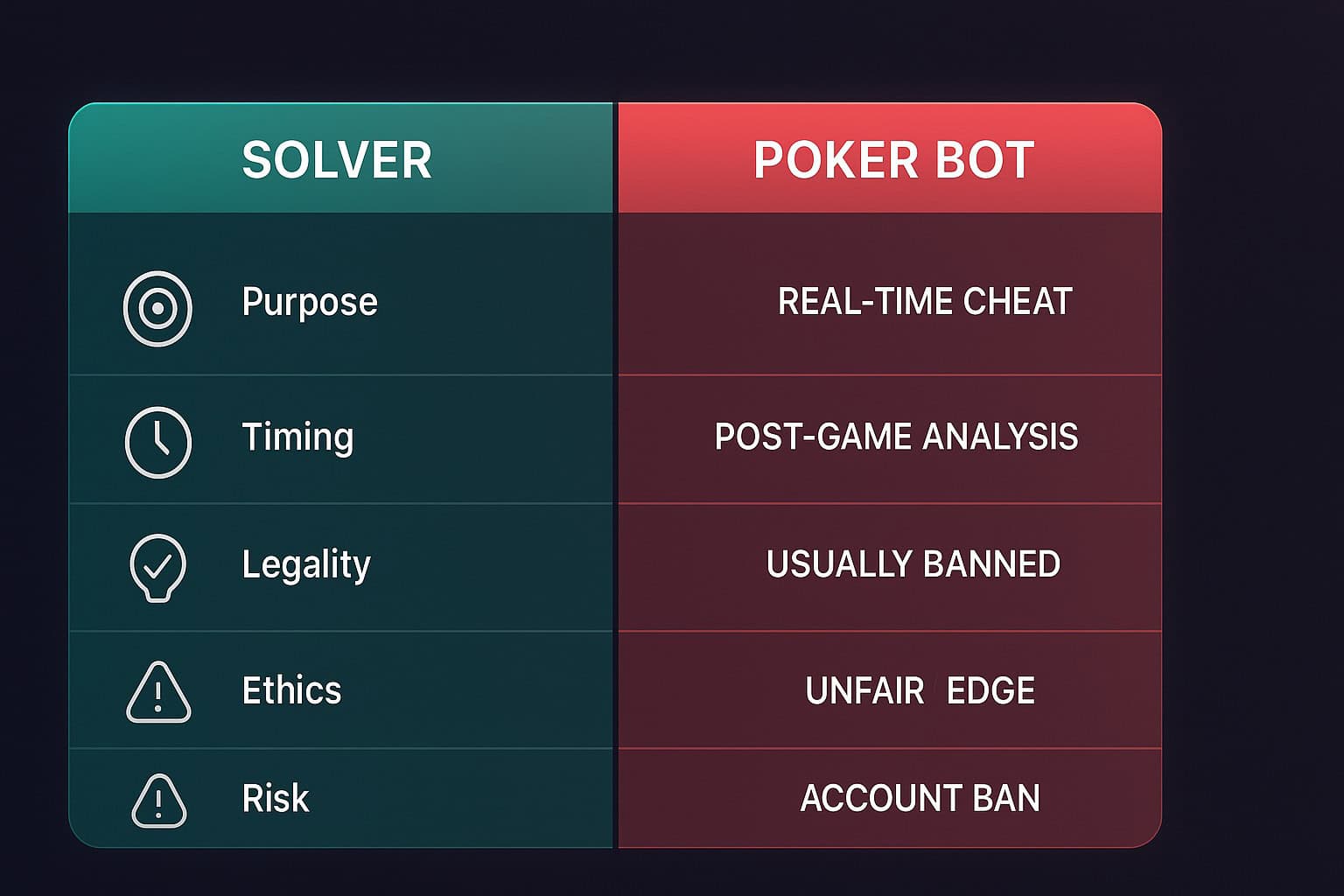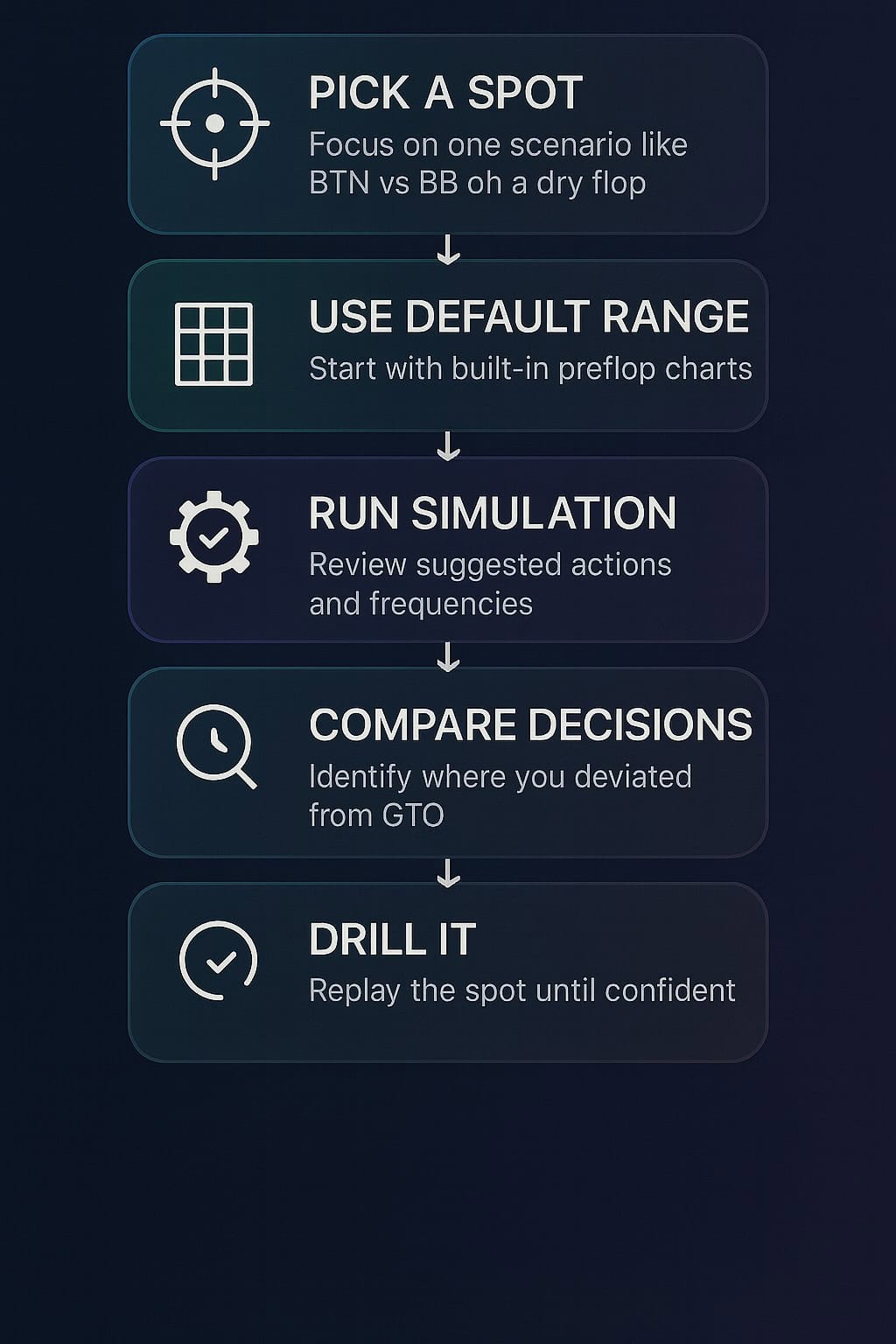
Is a Poker Cheat Bot the Future of GTO or a Banned Tool?
If you’ve ever watched a poker stream or read a strategy forum and thought, “Wait, what’s a poker solver — and why is everyone obsessed with it?”
You’re not alone.
Poker solvers used to be mysterious tools reserved for elite grinders and math wizards. Today? They’re the most accessible, powerful way to improve your game—and yes, even beginners can benefit. Learning how to use a poker solver is now one of the fastest ways to upgrade your strategy.
Let’s break it down, one logical bet-size at a time.
What Exactly Is a Poker Solver in 2025?
In simple terms, a poker solver is a piece of software that analyzes hands and suggests the most +EV (expected value) strategy based on mathematical game theory.
You give it a situation—say, a flop texture, positions, stack sizes—and it tells you:
- Which hands to bet, check, or fold
- What sizes to use
- How often to mix actions for balance
It’s like having a perfect player whispering advice in your ear… if that whisper took a few seconds to compute.
Poker Solvers as GTO Strategy Machines

Most solvers are designed to find Game Theory Optimal (GTO) strategies—meaning decisions that can’t be exploited in the long run.
This doesn’t mean they “know the best hand.”
It means they show how to play your range, not just your exact cards. By practicing with a poker solver, players learn balanced strategies that are difficult to exploit.
The result? You become:
- Harder to read
- More balanced
- Less reliant on “feel”
Even if you don’t play perfectly GTO, just understanding the why behind solver actions sharpens your edge.
Why Beginners Should Care About Poker Solvers
Yes, solvers can be complex. But here’s the truth:
Even a basic poker solver can highlight mistakes and help beginners correct them quickly.
You don’t need to understand every node or tree.
You just need to learn how to ask the right questions.
Here’s why solvers are perfect for new players:
- They show you your leaks
Upload a hand, run it through a solver, and you’ll often see:
“Oh… I should have folded that turn more often.”
You’re not guessing anymore. You’re learning.
- They teach betting patterns
Solvers don’t just say “bet”—they say how much and with what frequency. This builds your intuition fast.
- They reinforce structure
No more “I just felt like raising.” Solvers show when and why aggression works.
Solvers vs Poker Cheat Sheets
Old-school players loved their poker cheat sheet—simple grids of starting hands and postflop tips. Modern players rely on a poker solver instead, because it adapts dynamically to stacks, positions, and frequencies.
Solvers are dynamic cheat sheets that:
- Adjust to stack sizes and positions
- Teach frequency mixing
- Improve your decision-making under pressure
It’s the difference between a GPS and a paper map. Both work—but one recalculates when the river bricks.
The Most Beginner-Friendly Poker Solvers Ranked
If you’re looking for the best poker solver to start with, here are a few options that won’t melt your brain:
- Clean UI, visual grids, ready-made drills
- Built for all levels, cloud-based
- Great for studying postflop lines and preflop ranges
- Lucid GTO Trainer
- Scenario-based learning
- Feedback in real time
- Acts like a coach, not a calculator
- More advanced
- Powerful, customizable
- Better for intermediate users with solid fundamentals
Most beginner tools now include AI poker bots that let you play spots vs a solver-trained opponent—basically GTO sparring partners.
Solvers Are Not Poker Bots

Let’s clear this up:
- Solvers = Study tools
You use them after sessions to analyze hands. - Poker bots = Real-time tools
These make decisions during games—often illegal.
Using solvers ethically builds skill. Using poker bots or real-time assistance (RTA) to auto-play or cheat?
That’s not strategy. That’s a ban waiting to happen.
So yes, solvers are your friend. Poker cheat bots? Not so much.
How to Start Using a Solver (Without Getting Overwhelmed)

Starting with solvers can feel like learning a new language. Here’s a simple roadmap:
Step 1: Pick a situation
Example: Button vs BB on a dry flop.
Step 2: Use default ranges
Most solvers come with preloaded charts.
Step 3: Run the sim and observe
Watch the solver’s action breakdowns—bet sizes, combos, frequencies.
Step 4: Compare your decision
Where did you deviate? Why? What would you do next time?
Step 5: Drill the spot
Good solvers let you practice the same scenario until it clicks.
That’s it. You don’t need to solve the whole tree. Just study one spot at a time.
Key Concepts Solvers Teach Better Than Anyone
If you’re new, here are some ideas solvers will hammer into your head:
- Range vs Hand: Don’t think “I have KQ.” Think, “How does KQ play within my range?”
- Equity Realization: You may start with 60% equity, but do you realize it postflop?
- Blockers: Why having an Ace can make bluffing better.
- Polarized vs Merged Ranges: When to bet big vs small.
And above all:
“Just because you can bet… doesn’t mean you should.”
What Solvers Don’t Teach (But You Still Need)
Solvers are powerful—but they’re not everything.
Here’s what they don’t teach:
- Table image
- Live reads
- Mental game / tilt control
- Multiway dynamics
- Exploiting bad players
This is where humans shine.
You don’t need to become a bot—you need to become someone who studied with one.
Advanced (But Optional) Topics for Later
When you’re ready to level up, solvers also let you:
- Adjust for ICM in tournaments
- Build exploits into GTO lines
- Node lock ranges to see “what if” scenarios
- Practice vs ai poker bot simulations
But don’t rush.
Focus on mastering:
- BTN vs BB
- C-betting
- Turn probes
- River bluffs
Then go deeper.
Final Thought: Solvers Don’t Make You a Robot—They Make You Dangerous

You don’t need to memorize trees or run sims mid-session.
You just need to:
- Understand what the solver is doing
- Learn how it sees the game
- Use that to make better decisions
It’s not cheating, not magic.
Using a poker solver consistently makes you sharper and more balanced as a player. It’s the smartest study partner you’ll ever have.
So next time someone says “Solvers are only for pros,” just smile.
Because now? You’re building like one
